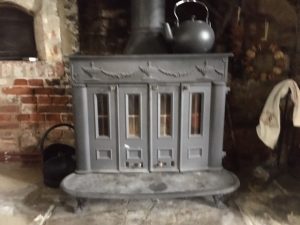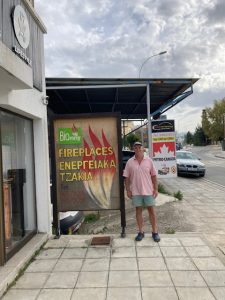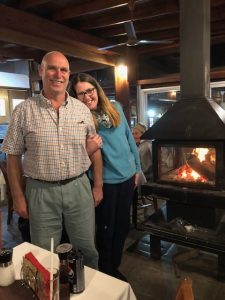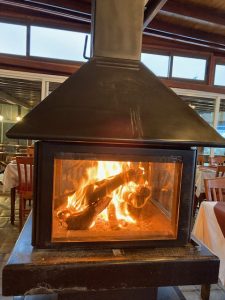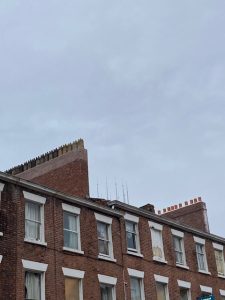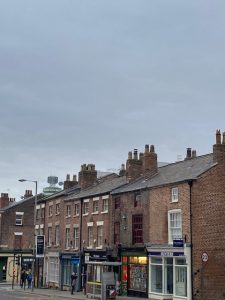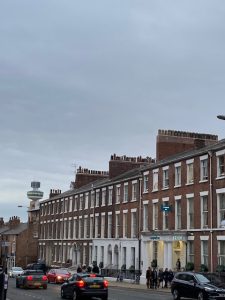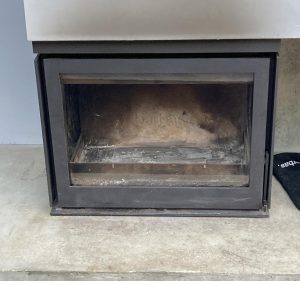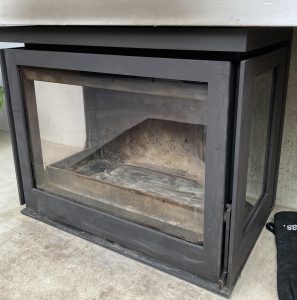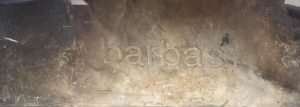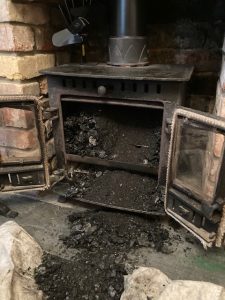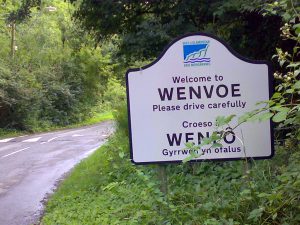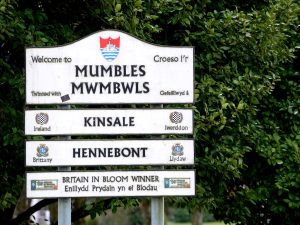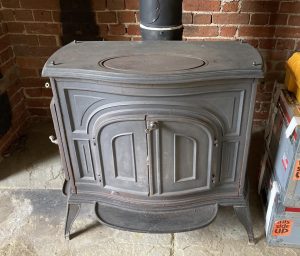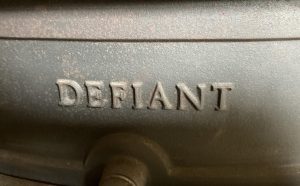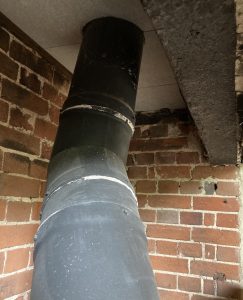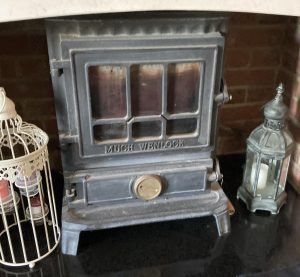 I see plenty of retro Coalbrookdale stoves around the area, but the vast majority of them are the Little Wenlock model or less so the Severn model. So, it was nice to see this Coalbrookdale Much Wenlock Multi-Fuel Stove at an address in Castle Camps the other day. The house also boasted a more modern version of this stove. The Aga Little Wenlock. Funnily enough the customer reported that the Coalbrookdale version of the stove worked just as well, if not slightly better than the Aga version.
I see plenty of retro Coalbrookdale stoves around the area, but the vast majority of them are the Little Wenlock model or less so the Severn model. So, it was nice to see this Coalbrookdale Much Wenlock Multi-Fuel Stove at an address in Castle Camps the other day. The house also boasted a more modern version of this stove. The Aga Little Wenlock. Funnily enough the customer reported that the Coalbrookdale version of the stove worked just as well, if not slightly better than the Aga version.
Coalbrookdale stoves are now made by the Aga Rangemaster company, in the form of an updated range of stoves, one of which is still called the ‘little Wenlock’. The Aga group is a midlands company based in Leamington Spa and has been manufacturing its stoves in a factory in Coalbrookdale, Shropshire, since 1930. The first Aga oven was designed by Swedish Nobel Prize-winning physicist Gustaf Dalen in 1922 and production started in the West Midlands seven years later.
Coalbrookdale is a famous Foundry in England that has been credited with some major “firsts” in the field of Iron Casting. The foundry was the site of the first coke-fired iron smelting furnace in the world, built by Abraham Darby in 1708 out of an existing charcoal furnace. The first blast day for the new furnace was 10 January 1709, and from the start, Darby produced cheap iron pots using a new, dry-sand mold technique, with complete success. They casted iron rails for the first trains as well as the parts for the world’s first cast iron bridge, which can still be seen today spanning the River Severn at Iron Bridge.
What I did find of interest whilst conducting my internet searches looking at Coalbrookdale stoves, was that the Coalbrookdale Company has an extremely long and interesting history that goes right back to the birth of the Industrial Revolution and far beyond. In the 12th Century the area of Coalbrookdale which is in Shropshire fell within the manor of Madeley, which belonged to Much Wenlock Priory. The monks here operated a bloomery (iron foundary) called “Caldebroke Smithy”. In 1536 bloomery recorded as still being in operation, however in 1540 during the dissolution of the Monistaries Much Wenlock Priory was closed by King Henry VIII, but the bloomery continued working. Then in 1544 the “Smethe Place” and “Calbroke Smethe” were leased to a Hugh Morrall. This is believed to refer to the Lower Forge (SJ667038) and Upper Forge (SJ669042). Before in 1545 the abbey’s lands being eventually bought by the king’s Italian physician, Agostino Agostini but he sold them in the same year (presumably at a profit) to a local man called Thomas Lawley. Then in 1572 the manor was acquired by John Brooke, who constructed a number of coal mines on his land and continued the operation of the bloomery.
In 1615 Brooke’s son, Sir Basil Brooke, bought the patent for making steel by the cementation process and built a blast furnace at Coalbrookdale. Interestingly, Brooke was arrested in 1644 by Parliament after being involved in a plot to prevent the Scottish army taking part in the English Civil War. The following year Brooke’s estate was sequestrated by Parliament, but the works continued in use. Then in 1651 the manor was leased to Francis Wolfe, the clerk of the ironworks, by Brooke’s heirs. Brooke had died in 1646 so presumably Parliament had returned the manor to his family. In 1658 – a new blast furnace and forges were built. In 1688 the ironworks were leased by a Shadrach Fox, who in 1696 was supplying round cannon shot and grenado shells to the Board of Ordnance during the Nine Years War. Unfortunately, in 1703 the furnace blew up but the forges remained in use.
In 1709 Abraham Darby I acquired the lease and created the Coalbrookdale Company, an iron foundry which used coke as fuel to make pots and pans. The company had a very long history and is famous for making the first iron bridge which still stands to this day. In 1945 the company started manufacturing wood-burning stoves and the Rayburn cooker. In 1969 the company was absorbed into Allied Ironfounders Ltd.
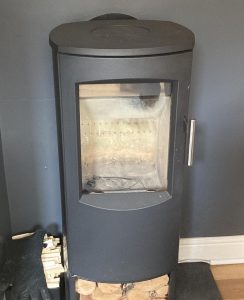


 My name is Paddy McKeown, I am a retired police officer (Detective Sergeant – Metropolitan Police), turned chimney sweep. I have completed training with ‘The Guild of Master Chimney Sweeps’, and Rod Tech UK (Power Sweeping).
My name is Paddy McKeown, I am a retired police officer (Detective Sergeant – Metropolitan Police), turned chimney sweep. I have completed training with ‘The Guild of Master Chimney Sweeps’, and Rod Tech UK (Power Sweeping).
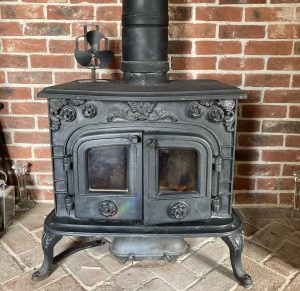
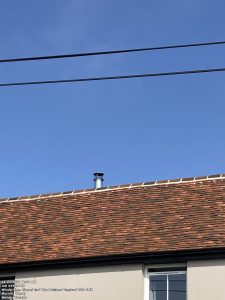

 I see plenty of retro Coalbrookdale stoves around the area, but the vast majority of them are the Little Wenlock model or less so the Severn model. So, it was nice to see this Coalbrookdale Much Wenlock Multi-Fuel Stove at an address in Castle Camps the other day. The house also boasted a more modern version of this stove. The Aga Little Wenlock. Funnily enough the customer reported that the Coalbrookdale version of the stove worked just as well, if not slightly better than the Aga version.
I see plenty of retro Coalbrookdale stoves around the area, but the vast majority of them are the Little Wenlock model or less so the Severn model. So, it was nice to see this Coalbrookdale Much Wenlock Multi-Fuel Stove at an address in Castle Camps the other day. The house also boasted a more modern version of this stove. The Aga Little Wenlock. Funnily enough the customer reported that the Coalbrookdale version of the stove worked just as well, if not slightly better than the Aga version.